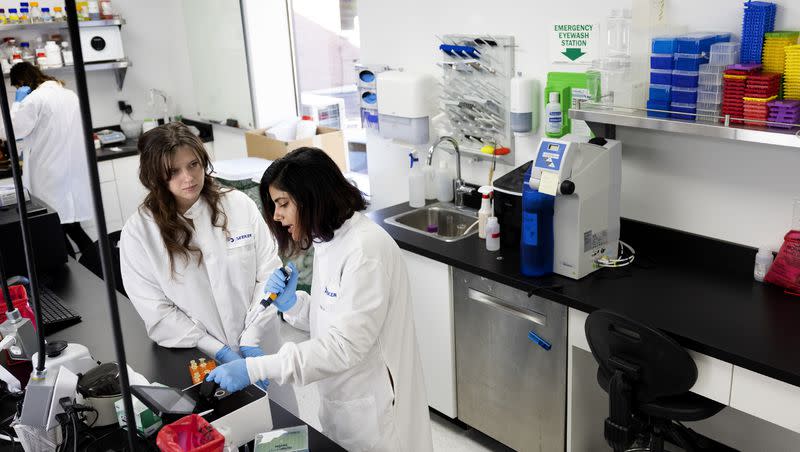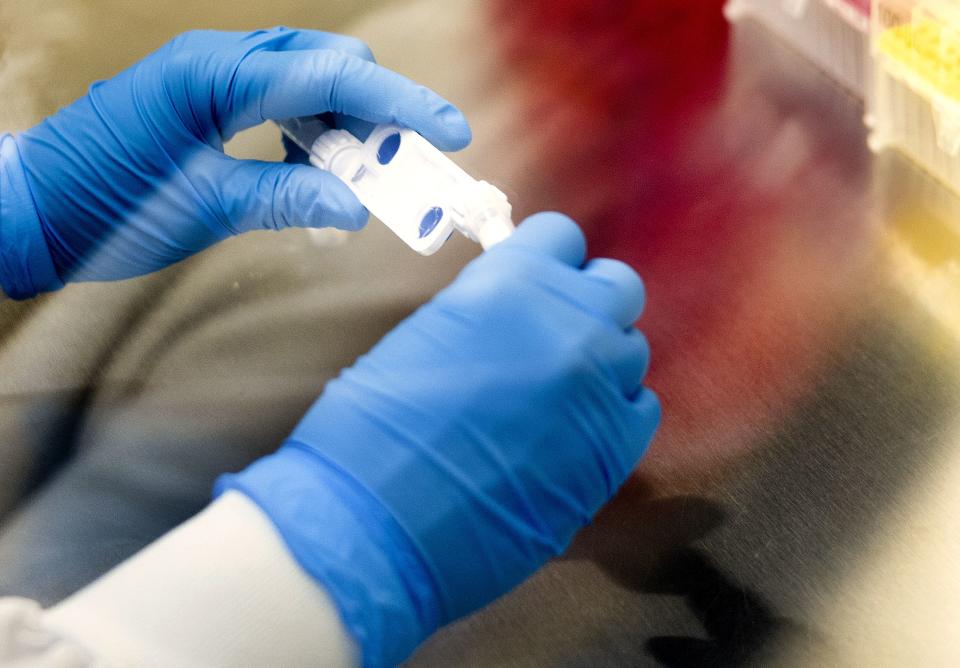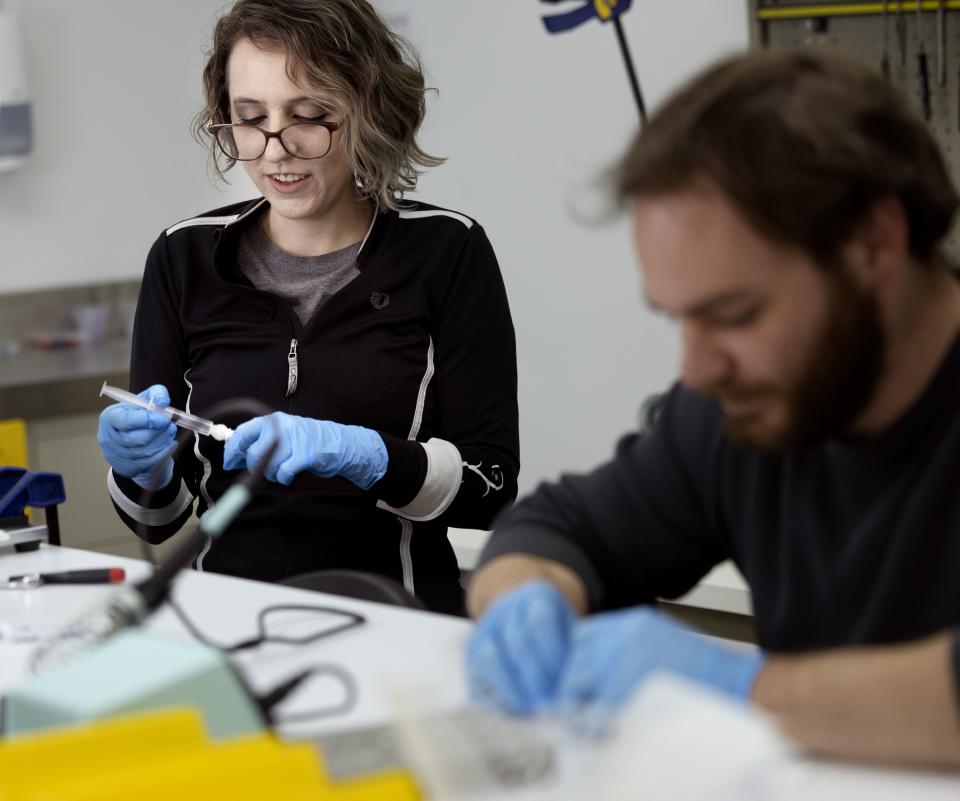Report: Utah’s life sciences industries are an economic juggernaut on the rise

Even amid an economic portfolio that’s been firing on all cylinders for years, Utah’s life sciences sector is a steamroller, outpacing all other industries for consistent job growth, high wages and driving an ever-larger slice of the state’s GDP while broadening into areas beyond a legacy that was once largely driven by medical device development.
While Utah-based scientists played historical roles in innovating or advancing a slew of life-changing medical implements like the artificial kidney, artificial heart, prosthetic limbs and the hearing aid, newly released research conducted by the University of Utah’s Kem C. Gardner Policy Institute finds the state’s life science and health innovation industry has grown into a multifaceted ecosystem that’s among the most vibrant in the country.
“With many high growth life sciences companies in Utah, the report findings are no surprise,” said Kelvyn Cullimore, CEO of life sciences trade association BioUtah. “Industry, academia, government and health care delivery are collaborating to build a significant life sciences hub in Utah.”

Cullimore also highlighted data from Gardner’s research that found Utah was No. 3 in the nation when it comes to life sciences’ share of states’ overall workforces, trailing only Massachusetts and New Jersey.
“Having the third highest density of life sciences jobs in the nation emphasizes the importance of the industry to the Utah economy,” Cullimore said in a press statement.
Related
Gardner researchers found Utah life sciences companies accounted directly and indirectly for 182,383 jobs across the state in 2022; earnings for Utah life sciences employees averaged 48% higher than the average for all other industries, $96,000 per year vs. $65,000; and the sector generated, directly and indirectly, $21.6 billion of the state’s gross domestic product in 2022.
Research co-author and Gardner senior research economist Levi Pace said the definitions of life sciences/biotechnology companies have evolved since the think tank last looked at the industry in 2018 and the updated parameters align with the latest academic literature and industry classifications. The report captures data from categories including research, testing and medical laboratories; medical devices and diagnostics, biosciences-related distribution, biotech, therapeutics and pharmaceuticals, for a total of 1,634 Utah establishments.
Like most other industries in the state, the preponderance of life science companies are small businesses, with 64% of the sector employing four or fewer people. In 2022, according to the report, Utah’s 15 largest life sciences companies by employment were in three segments: medical devices and diagnostics (nine companies); research, testing and medical labs (four); and biosciences-related distribution (two). ARUP Laboratories provided the most employment of any life sciences company in Utah, and at least nine others had 1,000 or more jobs.
Report data shows job growth in Utah’s life sciences sector has been a particular bright spot and over the last decade, the life sciences industry has averaged 5.1% annual job growth, well ahead of the collective average for other industries in the state, at 3.4%. And, Utah’s 5.1% growth average from 2012 to 2022 outpaced the national average of 3.5% growth over the same period.
While employment growth, wages and the overall economic output of Utah’s life sciences companies are at stellar levels and trending upward, Gardner researchers found gender and racial disparities in the demographic data of STEM talent that is vital to the sector, and particularly for advanced roles.
From 2017 to 2021, 19.5% of STEM workers in Utah were female compared to 48.1% of workers in all other industries, according to the report. Nationally, the share of female STEM workers was higher at 25.3% compared to 49.6% in all other industries. From 2017 to 2021, an average of 17.5% of Utah’s STEM workers identified as a racial or ethnic minority compared to 21.8% in other industries. Nationwide, 35.9% of STEM workers identified as a racial/ethnic minority compared to 38.4% in other industries. While white and Asian workers are overrepresented in STEM occupations, per the report, all other racial and ethnic groups are underrepresented both in Utah and the U.S.
Aimee Edwards, executive director of Utah life science outreach and education group Biohive, said the Gardner research data supports what her organization has known about diversity challenges in the life sciences sector and Biohive has launched multiple programs aiming to help address those issues.
“At BioHive we know that building a diverse talent pool is critical to attracting new companies to Utah and keeping our homegrown talent in the state,” Edwards said. “We’re here to help and have recruited over 300 women scientists and researchers in a mentorship and consultant group and launched professional and student chapters and are building partnerships to better connect with and support our underrepresented and underserved population.”
Edwards said while progress is being made, “we know there is more work to do.”
Gardner researchers note that education has played a critical role in the growth of Utah’s life sciences industries and that increasing the number of students with STEM degrees will be essential to continue the trend.

Over the last 20 years, Utah colleges and universities have greatly expanded STEM degree programs and the number of undergraduate and graduate degree earners in the areas of science, technology, engineering and math has grown from 2,371 in 2000 to over 7,500 in 2021, according to the report. And, STEM degrees as a percentage of all degree completions has also been on the rise, expanding from 13.1% of all graduates from Utah System of Higher Education schools in 2000 to 18.9% of all graduates in 2021.
Edwards said the caliber and volume of Utah graduates with the STEM degrees that are much sought after by both emerging and established Utah life sciences companies is part of the secret of the state’s high-octane performance in the sector.
“Our universities are at the core of that innovation and success,” Edwards said. “Our schools are churning out talent and that’s helping drive a growing recognition outside the state that we have the expertise to support our growing innovation hubs.”
Research taking place at Utah colleges and universities is also a driver of the state’s life sciences ecosystem.
The Gardner report noted funding from the National Institutes of Health, the primary source of funding for academic life sciences research in the state, grew by an average of 2.4% per year from 2012 to 2022 and Utah-based organizations were awarded almost $280 million in NIH funding in 2022.

